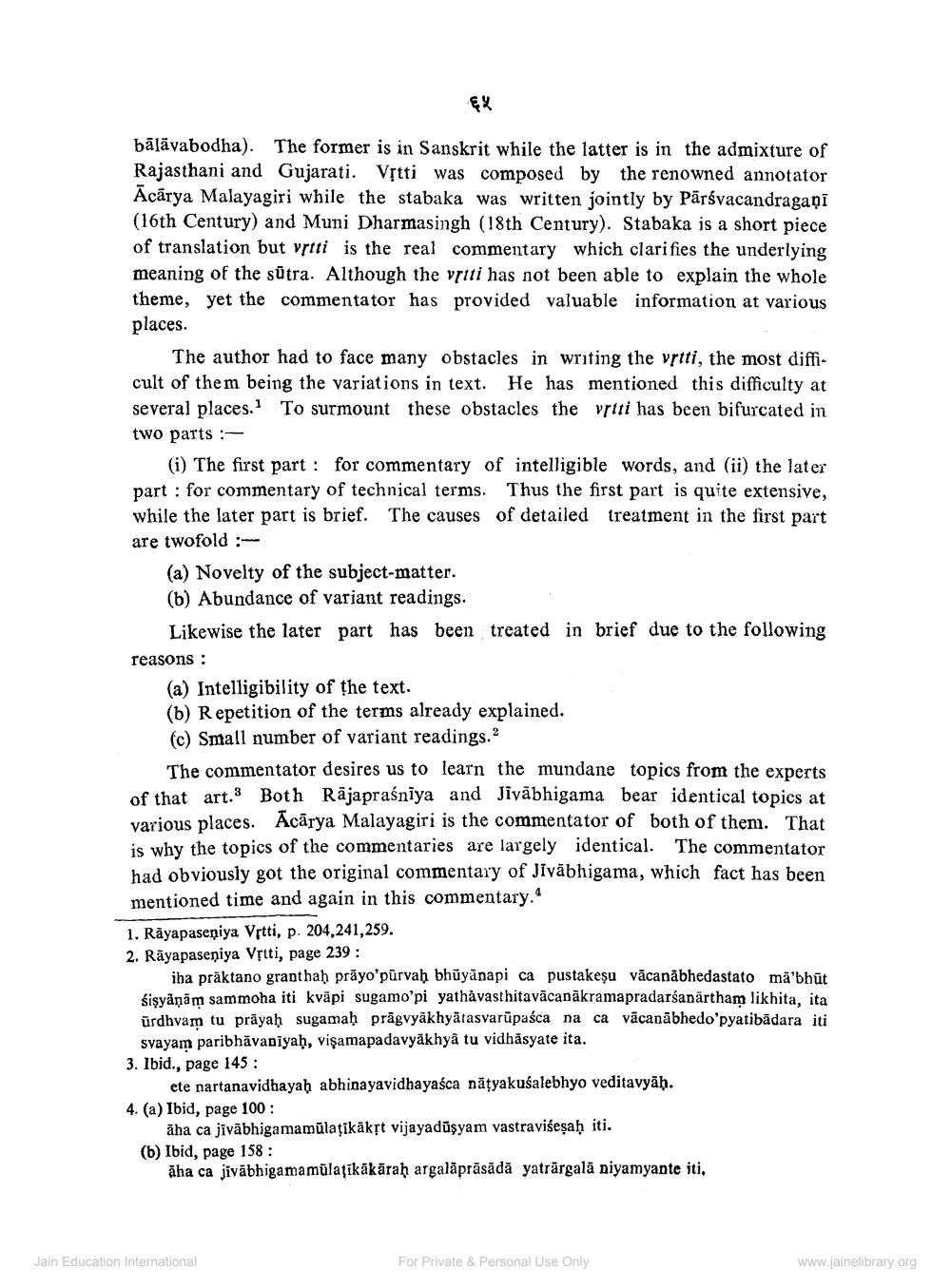________________
bālāvabodha). The former is in Sanskrit while the latter is in the admixture of Rajasthani and Gujarati. Vstti was composed by the renowned annotator Ācārya Malayagiri while the stabaka was written jointly by Pärávacandragaội (16th Century) and Muni Dharmasingh (18th Century). Stabaka is a short piece of translation but vrtti is the real commentary which clarifies the underlying meaning of the sūtra. Although the vruti has not been able to explain the whole theme, yet the commentator has provided valuable information at various places.
The author had to face many obstacles in writing the vrtti, the most difficult of them being the variations in text. He has mentioned this difficulty at several places. To surmount these obstacles the vruti has been bifurcated in two parts :
(i) The first part : for commentary of intelligible words, and (ii) the later part : for commentary of technical terms. Thus the first part is quite extensive, while the later part is brief. The causes of detailed treatment in the first part are twofold :
(a) Novelty of the subject matter. (b) Abundance of variant readings.
Likewise the later part has been treated in brief due to the following reasons:
(a) Intelligibility of the text. (b) Repetition of the terms already explained. (c) Small number of variant readings.?
The commentator desires us to learn the mundane topics from the experts of that art.3 Both Rājapraśniya and Jīvābhigama bear identical topics at various places. Acārya Malayagiri is the commentator of both of them. That is why the topics of the commentaries are largely identical. The commentator had obviously got the original commentary of Jivābhigama, which fact has been mentioned time and again in this commentary. 1. Rayapaseniya Vetti, p. 204,241,259. 2. Rayapaseniya Vštti, page 239 :
iha prāktano granthaḥ prāyo'pūrvah bhūyānapi ca pustakesu vācanabhedastato mā'bhūt sisvänām sammoha iti kväpi sugamo'pi yathavasthitavācanākramapradarśanärtham likhita, ita ūrhvam tu prāyaḥ sugamaḥ prägvyakhyātasvarūpasca na ca vācanābhedo'pyatibādara iti svayam paribhāvaniyaḥ, vişamapadavyakhya tu vidhäsyate ita. 3. Ibid., page 145:
ete nartanavidhayah abhinayavidhayaśca nāțyakusalebhyo veditavyāḥ. 4. (a) Ibid, page 100:
āha ca jīvābhigamamūlaţikākst vijayadūşyam vastraviśeşah iti. (b) Ibid, page 158 :
äha ca jivābhigamamülatikākārah argalāprāsādā yaträrgalā niyamyante iti,
Jain Education International
For Private & Personal Use Only
www.jainelibrary.org




